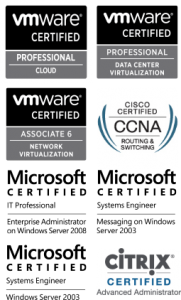New Blog!
I’ve decided to make more effort sharing what I learn, so I’ve created a new blog: https://adamrushuk.github.io
Why?
Over the past year or so I’ve increasingly found myself on GitHub. Mainly looking at code, but also content served up on GitHub Pages; typically sites ending github.io.
I’ve been meaning to get back into blogging, so thought I’d give GitHub Pages a go and see how it compares to using WordPress.
A few clicks later and I arrived on the GitHub Help pages, and noticed Jekyll mentioned: https://help.github.com/categories/customizing-github-pages/
I’d never even heard of Jekyll before, so time for some Google-Fu!
What?
Looks like Jekyll generates static content, and also integrates directly with GitHub:
- https://jekyllrb.com/
- https://pages.github.com/
- https://help.github.com/articles/using-jekyll-as-a-static-site-generator-with-github-pages/
How?
So now I’ve got a vague idea of what Jekyll is, I need to choose a theme and do some testing on GitHub. The Minimal Mistakes theme looks popular and is still being actively developed: https://github.com/mmistakes/minimal-mistakes/pulse
There’s even a great install guide that looks easy enough to follow: https://mmistakes.github.io/minimal-mistakes/docs/quick-start-guide/
Let’s give this a go then!
Here’s the steps I took:
- Forked the Minimal Mistakes theme, then renamed the repo to adamrushuk.github.io
- Confirmed the default theme was showing as expected: https://adamrushuk.github.io

- Cloned my new repo: git clone [email protected]:adamrushuk/adamrushuk.github.io.git
- Added the original repo as an upstream remote: git remote add upstream https://github.com/mmistakes/minimal-mistakes.git
- Removed the following folders and files:
.editorconfig
.gitattributes
.github
/docs
/test
CHANGELOG.md
minimal-mistakes-jekyll.gemspec
README.md
screenshot-layouts.png
screenshot.png - Updated information in _config.yml.
- Committed all changes with an “Initial commit” message: git commit -am “Initial commit after fork”
- Pushed the changes to GitHub: git push
- After about 1 minute the changes were reflected online:

- Went through the awesome step-by-step guide that details the many configuration options available: https://mmistakes.github.io/minimal-mistakes/docs/configuration/
